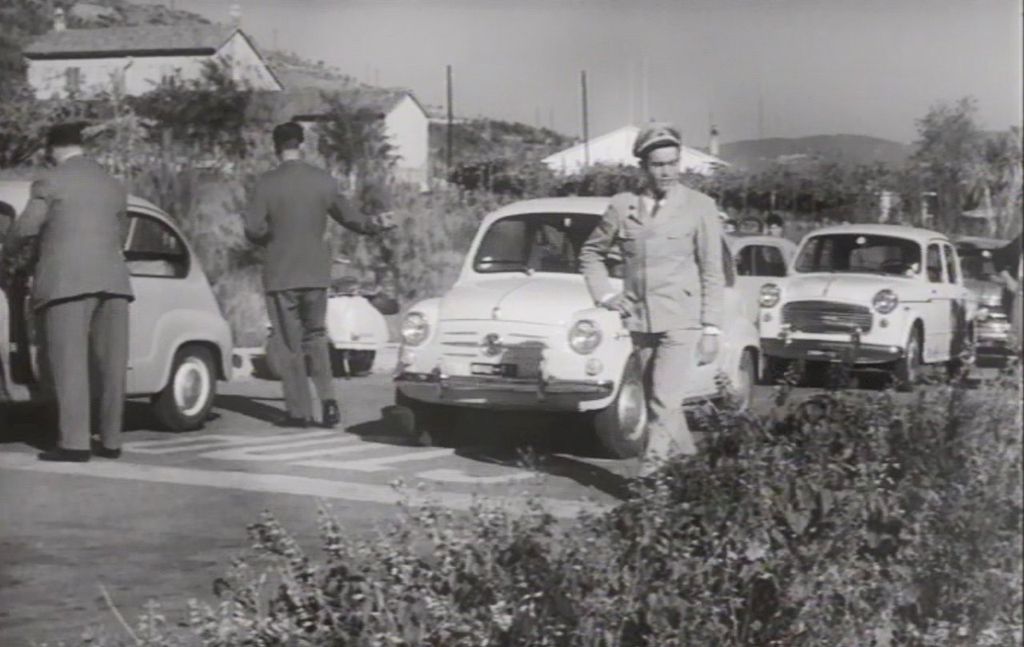Where is the iron curtain?

Director and screenwriter Mako Sajko, who can rightly be classified as one of the classics of Slovenian cinema, was born in 1927 in Tržič. He studied at the High Film School in Belgrade and graduated there in 1959, and at the same time he also trained in Munich and Paris. He began his long and fruitful career as an assistant director for famous Slovenian film directors, such as František Čap and France Štiglic.
Sajko's life path has always been closely connected with moving images. Since 1961, when he set out on his own, he has created a series of short documentaries, mostly based on his own scripts. Moreover, in the 1960s and 1970s, he ranked among the leading documentary filmmakers in Slovenia. His short but meaningful documentaries were all, from the first to the last, a reflection of their time. Mainly because of the chosen topic, they weren’t infamous only in Yugoslavia, but resonated all over the world. With the film "Suiciders, beware!" from 1967, he became notorious in the eyes of the then Yugoslav authorities, so that later the film "Narodna noša" (1975), which was fundamentally not thematically controversial, was not allowed to be shown publicly. At that time, Sajko permanently stopped producing films and instead devoted himself to film education and the projects of young filmmakers. He worked in relative anonymity for several decades until he received the Badjura Lifetime Achievement Award in 2009. After that, interest in one of the undisputed giants of Slovenian cinema grew again.
With his works, Mako Sajko was ahead of his time, as he opened up topics that are still relevant today. His watchful eye and sharp mind constantly discovered various humanistic and sociological aspects.
In 1961, Sajko first recorded the short feature "Maribor Week", and then in the same year he created his documentary debut "Where is the Iron Curtain", which he filmed to a large extent on the border area of Gorizia and Trieste. In the documentary, which does not yet carry a pronounced socially critical tone such as the films of his later production, Sajko does not criticize the cross-border capitalist system, but almost celebrates the situation along the border, which was transitory in this area and offered many benefits to the people living there. This is best supported by a sentence from the film that says: "Instead of it being an iron curtain, as some would like it to be, the border between Italy and Yugoslavia is almost a romantic institution."
The documentary shows scenes from everyday life along the border and the people who cross it in an extremely light and humorous way. The light-hearted atmosphere is additionally supported by humorous music and humorous narration by Sandi Čolnik. The film is dominated by scenes from international and small border crossings, which at that time became a meeting point for people from near and far. Here, Sajko touches on various aspects that characterize this "loose" border; from trading, smuggling, bilingualism and even cross-border love. In this way, he successfully highlights the coexistence of two nations that, despite the border that separates them, breathe together.
Announcements/
Catalogue and Screenings of the Project Oriente Vzhod / Occidente Zahod
04. 09. 2025On Friday, 5 September 2025, at 11:00, at Café Maks in Nova Gorica, within the framework of the Mesto knjige (City of Books) festival, the catalogue Oriente Vzhod / Occidente Zahod – The Border Through Film and History will be presented. The event is part of the “café matinées” series, which offers relaxed yet in-depth encounters with authors, thinkers, and creators.
Retrospective on the Move: The First Cross-Border Waypoints of Our Film Journey
18. 07. 2025Retrospective Oriente Vzhod / Occidente Zahod – Border Through Film and History, part of the official programme of the European Capital of Culture GO! 2025, launched its international tour in the first half of 2025. By July, it had visited eight countries and presented 31 films across 54 screenings, ranging from classics of Slovenian and Italian cinema to contemporary festival highlights, documentary essays and animated films.
Filmska umetnost kot orodje preseganja meja
09. 04. 2025Nekatere meje so vidne, druge nevidne. Nekatere ločujejo, druge združujejo. Obmejna regija med Slovenijo in Italijo je bila stoletja prizorišče prepletanja kultur, zgodovinskih preobratov in človeških usod. Lahko zgodovino pogledamo skozi film in jo razumemo skozi umetnost? Retrospektiva Oriente Vzhod / Occidente Zahod – Meja skozi film in zgodovino, ki jo Kinoateje organizira v sodelovanju s številnimi partnerji in je del uradnega programa Evropske prestolnice kulture GO! 2025 ponuja prav to – potovanje skozi filmske podobe, ki raziskujejo življenje na robu in središču Evrope hkrati.

